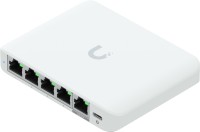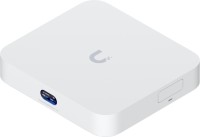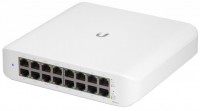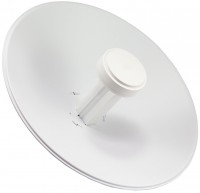Wi-Fi Equipment Ubiquiti series UniFi (cloud management)
Ubiquiti UniFi
The UniFi series from the American brand Ubiquiti includes entry-level professional access points that necessarily support Power-over-Ethernet power technology (that is, they do not need additional power, but receive it via an ethernet cable), are designed for wall and ceiling mount, are friendly with all necessary communication protocols and are often designed with an eye to the deployment of seamless networks, both indoors and outdoors. For example, in recreation centers, industrial premises, parks or music festivals.
 |
The key design features of the UniFi series have not changed for a long time, making them difficult to confuse with products from other brands. Usually, this is a minimalistic white plate with a diameter of 20-25 cm, in the centre of which there is a small circle with a neat logo. Such a router should easily fit into any interior, but to amaze the imagination and forge views is not about UniFi. In addition to the “plates”, rectangular and cone-shaped access points with wall and ceiling mounts periodically appear in the series.
The Unifi lineup consists of several dozens of entry-level, mid-range and high-end devices. All of them are equipped with gigabit LAN ports and fixed antennas with a range of 20 - 30 dBm, work with Wi-Fi 4 and 5 standards, and support dual-band operation. Mid-range and high-end models can also offer Wi-Fi 6 with optional dedicated 160MHz bandwidth and support for MU-MIMO technology. Such options are capable of creating a bandwidth of 1500 Mbps, simultaneously serving more than 100 client devices.
A typical UniFi model comes with a PoE injector with a mounting plate and a network cable about 60 cm long, plus a set of fasteners for mounting on a wall or stream. Most devices are sold individually or in packs of five without power injectors to save some money if you already have a PoE switch.



















